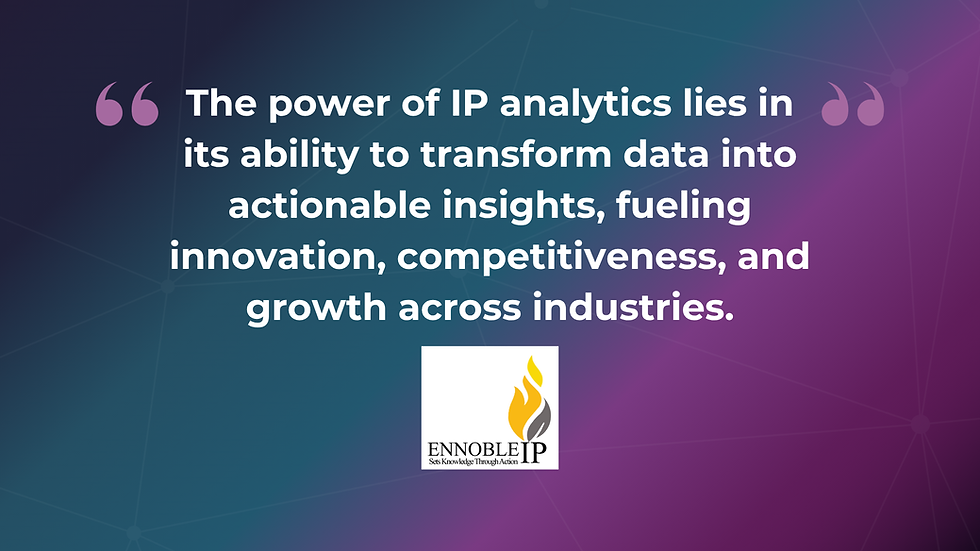Unlocking the Power of IP Analytics for Strategic Decision-Making by Dr Shweta Singh
- Hetanshi Gohil

- Oct 15
- 2 min read
In the Women’s IP World Annual 2025, Dr Shweta Singh, Founder and CEO of Ennoble IP, India, explains how Intellectual Property (IP) analytics has evolved from a legal safeguard into a strategic driver of innovation, competitiveness, and growth. She reveals how businesses, start-ups, and higher education institutions (HEIs) can harness IP data to make smarter, future-focused decisions.
From Legal Tool to Strategic Resource
Dr Singh describes how IP analytics has become a key differentiator for global organisations. By combining data from patent landscapes, Freedom-to-Operate (FTO) searches, and competitive benchmarking, companies can anticipate trends, uncover opportunities, and reduce risk, transforming innovation into a measurable advantage.
The Strategic Role of IP Analytics
For corporates, IP analytics optimises R&D investment and ensures alignment with evolving markets.
For start-ups, it identifies innovation gaps and prevents costly overlaps or infringement.
For universities and HEIs, it enhances research impact, attracts funding, and supports global rankings.
Dr Singh highlights how organisations worldwide, from pharmaceutical giants to AI-driven start-ups, are integrating IP analytics into their core strategies to stay ahead.
Patent Analytics: Seeing the Future of Innovation
Patent analytics offers valuable insight into technology trends and competitor behaviour. Examples include:
Generative AI companies are analysing patent clusters to identify gaps in AI ethics or content regulation.
Automotive pioneers like Tesla and Toyota are refining R&D using patent insights into autonomous systems.
Universities are using patent data to identify emerging fields like CRISPR or quantum encryption for focused research.
Landscape Mapping and Competitive Intelligence
Landscape mapping provides a holistic view of innovation ecosystems, helping businesses identify the relationships between players, geographies, and technologies. Dr Singh illustrates this through examples from renewable energy, eVTOL aircraft, and quantum computing, where mapping drives smarter partnerships and investment.
AI and Automation: The Next Frontier
AI-powered IP analytics tools now enable faster, more accurate data processing.
From Generative AI tools assisting in patent summarisation and clustering, to predictive analytics identifying future technology hot spots, Dr Singh emphasises that AI-driven solutions are transforming how IP professionals operate across sectors.
Conclusion
Dr Shweta Singh makes a compelling case: IP analytics is no longer optional; it’s essential. When effectively integrated, it empowers organisations to innovate strategically, identify market opportunities, and achieve sustainable growth. The time to act is now; those who embrace IP analytics today will lead the industries of tomorrow.
Read the full article in Women’s IP World Annual 2025, essential reading for innovators, researchers, and decision-makers seeking to harness the power of IP analytics for smarter strategies and sustainable growth.






Comments